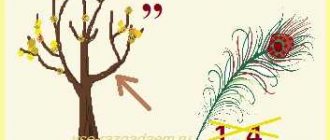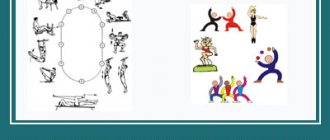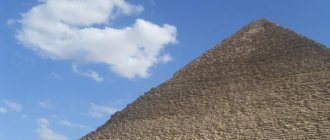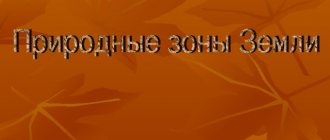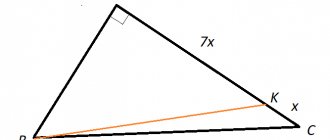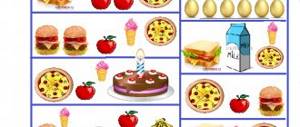What it is?
Yesterday I went hunting into this forest, enchanted by the fluffs of silver, with a loaded rifle. I walked along the clean, smooth path, but didn’t follow it... Who rode here on the sly? Who fell and walked here? I’ll come up and take a closer look: The fragile snow is all broken. Here are the claws, then the skis... Someone strange was running here. If I firmly knew the secret of Enchanted Speeches, I would find out, even by chance, Who wanders here at night. Because of the tall Christmas tree I looked around: Who leaves a deep, distant footprint in the snow?..
The hewn horns began to sing...
The hewn horns began to sing, the plains and bushes ran. Again chapels on the road And funeral crosses.
Again I am sick with warm sadness from the oat breeze. And on the mortar of the bell towers a hand involuntarily crosses itself.
O Rus', the raspberry field and the blue that fell into the river, I love Your lake melancholy to the point of joy and pain.
Cold sorrow cannot be measured, You are on a foggy shore. But not to love you, not to believe - I can’t learn.
And I will not give up these chains And I will not part with the long sleep, When my native steppes ring with prayerful feather grass.
Interesting biography of Yesenin by dates
The light of Russian poetry was born on September 21, 1895 in the distant Ryazan province (the village of Konstantinovo). Yesenin’s mother was a peasant, his father went to the capital to work and worked in a printing house. In addition to the son, there were two more sisters in the Yesenin family.
The Russian poet began his studies at the Zemstvo School, where he studied for five years. After graduating from college, the poet entered a parish school, and in 1913 he left his native province and went to Moscow with the goal of entering Shanyavsky University. During these years, Sergei Alexandrovich was already trying himself in the poetic field. During a visit to Petrograd, he found the opportunity to meet with the poet Alexander Blok, already popular in the northern capital, and recited his works to him. This meeting greatly helps him in his future work. There he begins to communicate with poets engaged in the new “new peasant” direction.
In Moscow, the poet lives on Bolshoy Strochenovsky Lane, serves as an assistant proofreader (reader) at the “Sytinskaya” printing house on Pyatnitskaya, where he meets his future partner, Anna Izryadnova. Their first child, Yuri, was born. In 1916, the poet’s first collection of poems, entitled “Radunitsa,” was published. It is he who brings fame to the poet. Yesenin’s main theme invariably remained the Motherland - peasant Rus', the love for which he carried throughout his entire short but bright life.
Since 1914, his works have been published in children's publications. Recognition quickly overtook the poet. His books “Dove” and “Transfiguration” are published. His works, albeit in a unique way, are noted by the great Maxim Gorky. Later, in the twenties, Yesenin became interested in another poetic trend - imagism, becoming one of the founders of this “order”, and published several collections in this style.
The year 1920 was “rich” in the author’s “verses”. Poems are published: “Land of Scoundrels”, “Black Man”, “Leaving Rus'”, “Soviet Rus'” and others. The poet publishes his works and sells them; he rents a shop on Bolshaya Nikitskaya.
The poet's personal life was no less fascinating than his work. He did not live long with his first common-law wife, as he became very interested in Isadora Duncan, a bright and talented dancer with whom he traveled a lot. But the sudden passion that flared up just as quickly died down, the poet returned to Moscow, and later left for a trip to Transcaucasia. A collection of his poems “Persian Motifs”, poems “Letter to a Woman”, “Letter to a Mother” and “Departing Rus'” are being published.
Soon Yesenin marries Zinaida Reich, who gave him two children, but he too fell apart.
The last marriage - with Leo Tolstoy's granddaughter Sofia Andreevna Tolstoy - was unhappy. He began to have problems with the authorities, criticism of his riotous lifestyle in the press, the poet became addicted to alcohol, and a criminal case was opened against him. The concerned wife, with the help of Rakovsky, admits him to a paid clinic for mental patients.
On December 21, 1925, the poet left the hospital, taking all his savings, went to Leningrad, where a week later he was found dead in the Angleterre Hotel. According to one version, he hanged himself; according to another, the murder was organized by OGPU officers.
The golden grove dissuaded...
The golden grove dissuaded the Birch, cheerful language, And the cranes, flying sadly, No longer regret anyone.
Whom should I feel sorry for? After all, everyone in the world is a wanderer - He will pass, enter and leave the house again. The hemp tree dreams of all those who have passed away With a wide moon over the blue pond.
I stand alone in the middle of a naked plain, And the cranes are carried by the wind into the distance, I am full of thoughts about my cheerful youth, But I do not regret anything in the past.
I don’t feel sorry for the years wasted in vain, I don’t feel sorry for the lilac blossom soul. There is a fire of red rowan burning in the garden, but it cannot warm anyone.
The rowan brushes will not burn, the grass will not disappear from yellowness, just as a tree silently drops its leaves, so I drop sad words.
And if time, scattered by the wind, Rakes them all into one unnecessary lump... Say this... that the golden grove Dissuaded with a sweet tongue.
Lesson summary on literary reading “S. Yesenin “Birch”.
~~Lesson topic: S. Yesenin “Birch” 2nd grade of educational complex “School of Russia” Objectives: - To introduce children to the world of poetry, to develop a poetic ear, to observe onomatopoeia; - teach children to imagine pictures of nature depicted by the poet. — Teach children verbal drawing, teach them to express their impressions, share their ideas with friends, expand their vocabulary and horizons — Teach children to expressively read poems about nature - cultivate empathy for wintering birds, a desire to help them. Regulatory universal educational activities: - organize your activities, prepare a workplace for performing different types of work (observations); — accept the educational-cognitive task and maintain it until the end of the educational activities; - determine and formulate the purpose of the activity in the lesson. Cognitive universal learning activities:? — search for information necessary to solve educational problems. - understand information presented in verbal, pictorial, schematic, model, etc. form; Communicative universal educational actions: - consciously and voluntarily?? construct a speech statement in oral and written form; — answer questions in a reasoned manner, justify your point of view, construct statements that are understandable to your partner, adequately use speech means to solve communication problems (greeting, farewell, educational game, dialogue); — enter into educational cooperation with the teacher and classmates, carry out joint activities in pairs and groups; - allow for the possibility of different points of view among people, show tolerance towards the statements of others, show a friendly attitude towards partners. Equipment: multimedia presentation, cards with a poem with passes, drawing of a birch, recording of the romance “White Birch”.
1. Organizational moment. -Show me the facial expression with which you came to class? -Why are you smiling? “I see sad faces, frightened eyes. Apparently this is because we have guests. Let's do this exercise “Pouring from a jug” (Children sitting, slowly tilt their heads to the floor and pour out fear, anxiety, negative emotions)
2. Speech warm-up. The snow is fluttering and spinning, it’s white outside. And the puddles turned into cold glass.
Questions. _ Start reading slowly and gradually speed up the pace. - Start reading quickly and gradually slow down. -Start reading in a whisper and gradually increase your voice. _ Start reading loudly and gradually move on to a pinch
3. Checking homework. S. Yesenin “Winter Sings and Calls”
4. Guys, I propose now to collect and read a few proverbs (group technology)
He who stands up for his homeland is a hero. A man without a homeland is like a nightingale without a song. On someone else's side, I'm happy with my little crow.
Guys, tell me, what are we talking about in the proverbs? About the Motherland. (the word MOTHERLAND is attached to the board).
-Which poet was considered the singer of their homeland?
Sergei Yesenin. (the word ESENIN is attached)
— What do you know about Sergei Yesenin?
Now guess the riddles.
In a green blouse, in a white sundress. Alena is standing: a green scarf, a thin waist, a white sundress.
Sticky buds, green leaves. With white bark stands under the mountain. (the word BIRCH is attached)
Birch has been growing in Russia since time immemorial and is considered the most beloved tree. In ancient times, the New Year began with a festive ceremony not at the Christmas tree, but at the birch tree. After the wedding, the newlyweds planted two birch trees near the house with the hope that they would protect from lightning and scare away evil, and bring health and happiness to the whole family.
5. Self-determination.
-Guys, why do you think we remember Yesenin and the birch tree when we talk about the Motherland? (They can be called symbols of RUSSIA) – a problematic situation.
- Who can guess what we will do during the lesson, what is the topic of the lesson?
— Sergei Yesenin is a great Russian poet who glorified our country with his creativity. He loved his homeland and its nature very much. And this was reflected in Yesenin’s poems. Today we will get acquainted with the poem “White Birch”. It was first published in the Moscow children's magazine Mirok, when Sergei Yesenin was only 19 years old. Open the textbook, see if our assumptions were justified?
Reading a poem (audio recording)
— Did you like this poem? Why? -What colors is this poem painted in? -What time of year are these colors?
6. Take a poem on the table, read it to yourself and underline unclear words (work in pairs)
7. Vocabulary work.
A brush is a bunch of threads used to decorate something. Fringe is a braid for covering something with a number of freely hanging threads, as well as a number of such hanging threads, tassels. Border is a strip along the edge of an object, fabric, etc., differing in color, pattern, material. Dawn is the bright illumination of the horizon before sunrise and after sunset. Before we start working on the topic, I want to remind you that in order to read the poem expressively, to show all the extraordinary beauty of the word, we need to listen carefully.
- Now let's re-read this poem to better understand and feel it.
I suggest now reading with binary reading along the chain.
- What kind of birch tree did you see? — What colors did the author use to describe the birch tree? White, silver. - Find the lines that talk about color. The description of frost is especially interesting in the poem; find this description. — What artistic technique does the author use? - Comparison.
- What does he say about birch brushes? -What else are we talking about? Flowers. - What is this technique called? Comparison. - Find more comparisons in the text. Read it. — What time of day does the poet paint? Morning. - Why did you decide so? Dawn. — Is this morning sunny or cloudy? Burning in golden fire. - Read how the dawn turns in winter. — What literary device does the author use to create the image of a birch? Personification. - Prove this with lines from the poem. —What feeling, mood did the poet create? Magical, calm, joyful anticipation of a miracle. — Where do you think you need to pause a little? - Where to read faster? -Reading by well-read children.
8. Physical education minute. - Close your eyes. -Imagine that we are walking through a birch forest. Good in the forest. Snowflakes are falling quietly. Lift your face. Feel the coolness and freshness of snowflakes. Snowflakes fell on your palms. You admired their beauty and decided to set them free. Take in some air. Blow snowflakes off your hand. Snowflakes swirled in a round dance. Go ahead. Look to the right: a bullfinch is sitting on a birch branch. To the left, under the tree, sits a hare. Slowly, we leave the forest. Stretch, breathe, feel how light your body has become. Sit down.
9.Work on memorizing the text.
I suggest playing the game. We must connect pairs of words, as Sergei Yesenin connected them (i.e., each object in the poem has its own unique attribute. Find it and connect the object and attribute).
The star who makes the fewest mistakes wins (work individually)
Self-test (slide). 10. Game "Poets". Guys, do you think it’s difficult to be a poet?? Now we’ll see if you can find the right rhymes and words for the poem (group technology) Birch _____________ birch Under my ____________ Covered up ___________, Exactly ________________.
On the fluffy ______________ ____________ border Bloomed ____________ White _____________.
And stands ____________ In the sleepy ____________, And ___________ snowflakes In the golden ____________.
And the dawn, ____________ Bypassing _____________, sprinkles ____________ with New _____________.
- Let's check what you did. (Several answers are heard, and then compared with the sample) - Is it easy to be a poet?
11. Compiling a syncwine 1. Birch 2. Curly White 3. Covered up, blossomed, sprinkles. 4. Proverb about the Motherland, riddle about the birch. 5. Symbol of Russia.
What a beautiful birch tree A.S. Yesenin turned out to be. With the help of words, he was able to convey her beauty. -How else can you show her beauty? -With the help of paints. -With the help of music.
Listening to a romance (based on S. Yesenin’s poem “White Birch”).
12. Summing up. Guys, let's remember who or what we talked about in class. Why can we unite MOTHERLAND, ESENINA, BEREZKA (symbols of RUSSIA).
What is the name of the poet we were talking about? What poems do you know? What poems could you recite by heart?
- Guys, look, we also have a birch tree in our class, only it’s not white, but that’s it for now.
— There are snowflakes on your tables. If you found the lesson interesting and educational, then take a snowflake and decorate our birch tree with it. If you are not entirely satisfied with your work in the lesson, but overall you liked it, then decorate the birch tree with a snowflake. And if you didn’t like the lesson, you were bored and incomprehensible, then attach the snowflake in a clearing, and not on a birch tree..
13. Homework. - Learn the poem and show the images that arise in your mind in an illustration for it.
14. Reflection.
-Select and continue any sentence. -In class I learned... - During this lesson, I would praise myself for... - After the lesson, I wanted to.... -Today I managed…..
